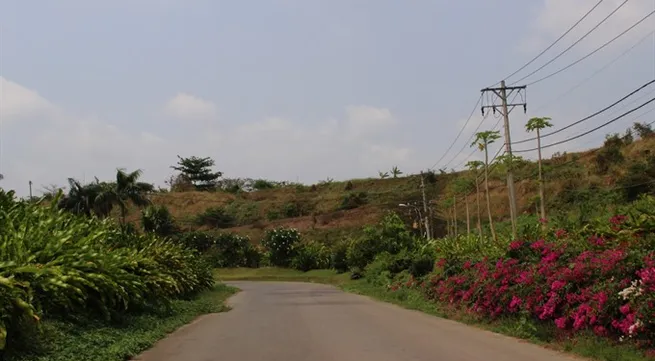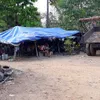HCM City landfill grows into orchard

nbsp;The heavily polluted Đông Thạnh rubbish dump innbsp;HCMnbsp;Citynbsp;has been converted into an orchard, drastically improving the environment in the surrounding neighbourhood.

|
| Once heavily contaminated, the former Đông Thạnh landfill in HCM City’s Hóc Môn District has turned much greener. |
HCM CITY — The heavily polluted Đông Thạnh rubbish dump in HCM City
The landfill in Hóc Môn District was once among the city’s major dumps. It received over ten million of rubbish daily, which contaminated local air and underground water.
In 2001, HCM City People’s Committee closed the dumping site and assigned the Urban Environment Ltd Company to manage it and tackle environmental pollution there.
Đoàn Khắc Hùng, head of Đông Thạnh Waste Treatment and Recycling under the company, said that as soon as the landfill was closed, clay was used to cover all rubbish dumping areas. The layer of clay was as thick as four centimetres, he said.
A 50-cm layer of gravel covered all the roads within the landfill.
After the landfill was transferred to his company in 2001, more measures were taken to revitalise the contaminated soil, Hùng said.
“Firstly, trees were grown to restore the natural environment and look of the site. Secondly, the trees generate economic value. We tried to select the most adaptive types of plants for the site,” he said.
“It was difficult to select suitable trees to grow because of the non-natural soil at the dumping site.”

|
| Melon grown in a net house in the former Đông Thạnh landfill in HCM City. |
Since then, a variety of orchards have appeared on the area as the landfill returns to a natural state. Over 1,000 guava trees, 2,000 apricot blossom trees and orchid gardens are growing well there.
Along the entrance to the former dumping area are grass fields and ornamental plants.
Additionally, six net houses were built on the area of 12,000 sq.m for growing fruits and vegetables.
The net house is known as a structure enclosed by agro nets or any other woven material to allow the required sunlight, moisture and air to pass through the gaps. It creates a micro climate conducive to the plant growth.
Hùng said that orchards and ornamental plants generated about VNĐ300 million (US$13,500) yearly. The sum is used to cover costs for labour and nursing the trees.
Quách Thị Phương, an agricultural engineer working at the net houses, said that melon grown in the net houses was watered and fertilised automatically.
Only leaves and fruits were pruned manually to ensure that fruits could develop properly, Phương said.
Melon could be harvested every 60-75 days. Each melon weighs about 1.6-1.8 kg.
Enterprises and supermarkets buy all the melons, Phương said.
The urban environment company also co-operated with local authorities including Hóc Môn District People’s Committee and Đông Thạnh Commune People’s Committee to supervise the environment at the former dumping site.
They established a supervising group with the participation of local residents who will report any environmental problems to authorised agencies to be fixed in a timely manner. — Đức
Tags:





